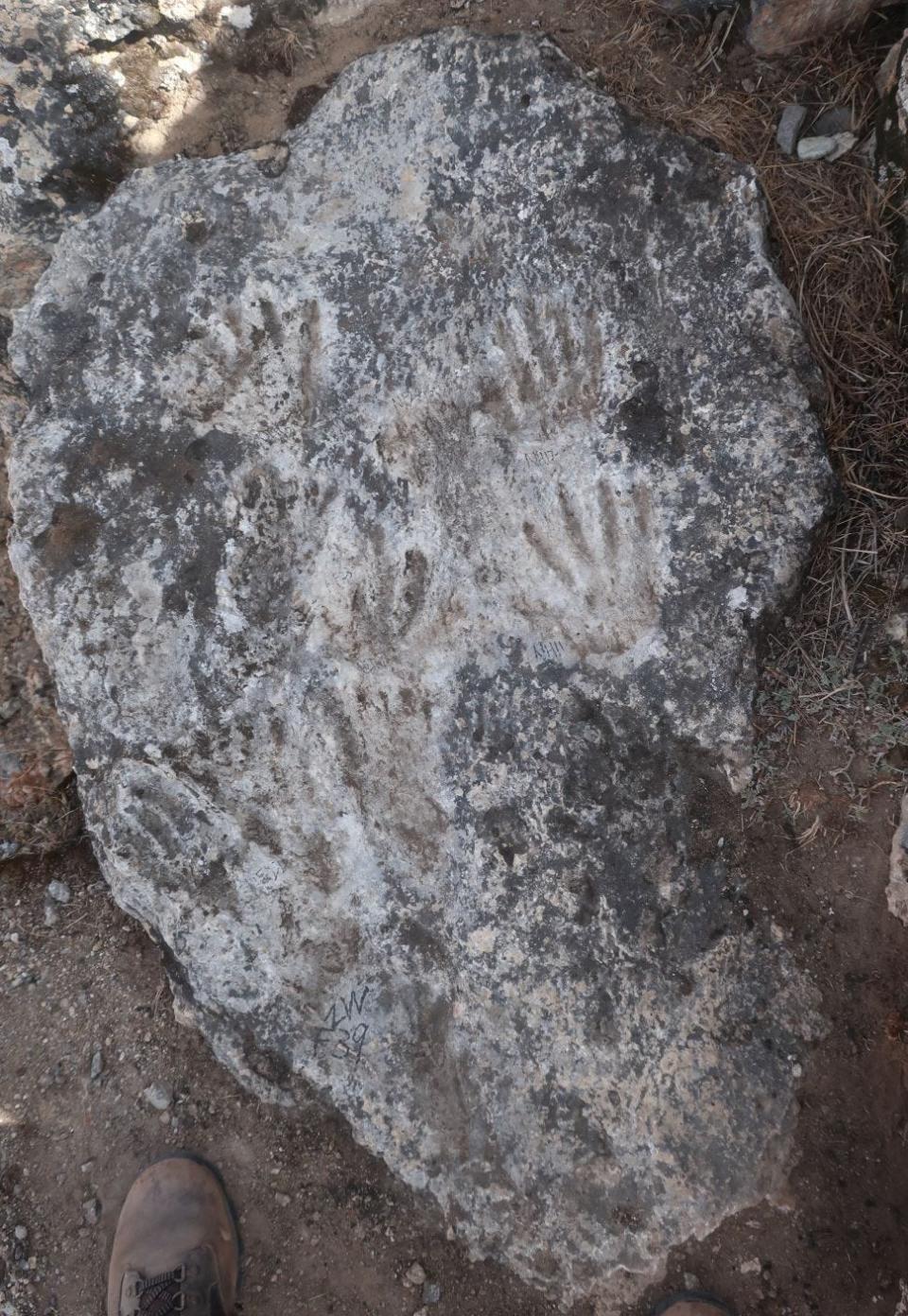Ice age kids squished hands in mud. Are fossilized prints some of world's oldest art?
Fossilized handprints of children from nearly 200,000 years ago were discovered in India and believed to be some of the world's oldest art – providing evidence of the earliest human ancestors from the ice age.
The impressions, likely of squished hands and sticky mud from children, were preserved in limestone and discovered on the Tibetan Plateau in South Asia, according to a study in the Science Bulletin journal. The children were believed to be between seven and 12.
The study's authors believe the hand and footprints should be considered "parietal" art – which means prehistoric art. Not all of the study's archeologists would agree that the findings fully qualify as parietal, which is often used to describe paintings on cave walls and meaning something cannot move from place to place.
Skeleton couple: Duo from 1,500 years ago discovered in 'eternal love' embrace together
Eternal motherly love?: Extinct spiders found protecting offspring in 99-million-year-old fossils

The oldest known examples of parietal art prior to the latest discovery were motifs and hand stencils found on the Indonesian island of Sulawesi and in the El Castillo cave in Spain. Those date back about 45,000 years ago, though, whereas the newly discovered fossils date way back further.
Study co-author David Zhang, a professor of geography at Guangzhou University in China, first discovered five handprints and five footprints on an expedition on the Tibetan Plateau. Zang and his co-authors dated the sample of the prints by assessing uranium. Based on the rate at which uranium decays, they're estimated to be about 169,000 to 226,000 years old – during the period known as the Pleistocene epoch.
Study co-author Matthew Bennett, a professor of environmental and geographical sciences at Bournemouth University in Poole, England, told Live Science the imprints could from Denisovans, a recently discovered sub-species of homo sapiens or archaic humans.

"Denisovans are a real possibility," Bennett said. "There's lots of contenders, but no, we don't really know."
Regardless, the imprints appeared to be by children – illustrating a similar human experience of kids imprinting their hands and feet today.
“How footprints are made during normal activity such as walking, running, jumping is well understood, including things like slippage,” co-author Thomas Urban, a research scientist at Cornell University’s tree ring laboratory told Gizmodo. “These prints, however, are more carefully made and have a specific arrangement – think more along the lines like how a child presses their handprint into fresh cement.”
Does it qualify as art? That's up for debate. Bennett noted: "I've got a 3-year-old daughter, and when she does a scribble, I put it on the fridge and say it's art. I'm sure that an art critic wouldn't necessarily define my child's scribbles as art, but in general usage, we would do. And this is no different."
Eduardo Mayoral, a Paleontologist at the University of Huelva In Spain, who has studied Neanderthal footprints told NBC News that it's hard to deem the imprints as art.
“I find it difficult to think that there is an ‘intentionality’ in this design,” Mayoral said. “And I don’t think there are scientific criteria to prove it — it is a question of faith, and of wanting to see things in one way or another.”
This article originally appeared on USA TODAY: Ice age kid's fossilized handprints in India may be world's oldest art

 Yahoo Movies
Yahoo Movies 
